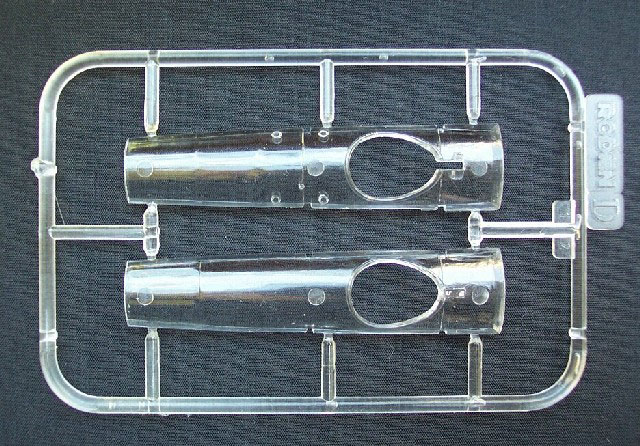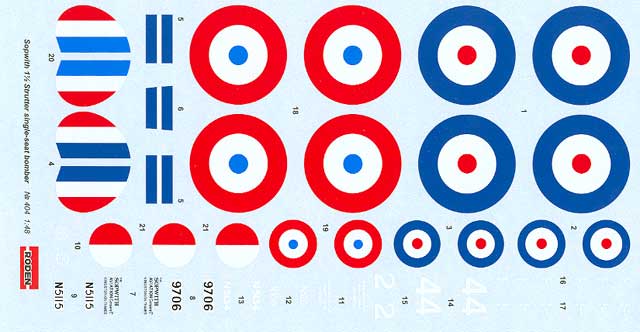As expected, the contents are essentially the same as
those found in the release of the two-seat version. In this case, sprue D
replaces G to provide the single seat insert for the top of the fuselage.
The wings and fuselage components are still molded in clear plastic, which
is a blessing to some, and a hindrance to others. The idea is to allow for
easy replication of the cellon-covered areas and to permit the imitation
of the airframe through a light coat of paint over a dark coloured
structure. The downside is that the plastic is more brittle to work with
and harder to see when eliminating joins.
A nice fret of P-E supplies the fuselage access doors that are peculiar to
this variant as well as details for the engine, struts, control horns and
instrument panel. Eagle eyed modelers will also note the parts for the
upcoming French version.

The plastic parts are well molded and show good crisp detail. The basics
have been provided for the cockpit so the chance for extra detailing is
there. The spares box grows thanks to both types of propeller being
supplied as well as an abundance of machine guns! These latter items being
particularly exquisite.
The inbuilt dihedral on the one-piece wings makes for trouble free
alignment, as does the central “W” struts. Careful sanding and dry fitting
will be needed for other parts of the assembly, but none of this should be
new to modelers of this era of aircraft.
Detail is not lost on the smaller items and all parts were fully formed.
Albatros Productions Datafile No.80 was used to overlay
the parts. An initial comparison showed major discrepancies but it was
quickly established that Ian Stair’s plans were not printed in true 1/48th
scale. The previous review on the two-seater version (using DF no.34) had
shown that all was ok and obviously the same applies here due to the
commonality of parts.
The rib detail on the wings is wonderfully subtle, as is the effect of the
internal structure under the cockpit. Equally well done are the fin, tail
plane and top decking.
The large decal sheet comes with options for 4 aircraft.
Despite the potential dangers of the roundels being printed as a single
unit, my example was in perfect register. The options provided give a nice
selection of the type of markings applied to RNAS machines.
A pleasant surprise was seeing that Roden had made an
effort to provide different blues for the British and French roundels.

I) Sopwith 1 ˝ Strutter N5134,
December 1916.
This Westland built machine was originally delivered to
No.3 Wing RNAS. It was transferred to the French where they painted their
own colours over the British roundels and rudder. While piloted by Sergent
Louis Pivette, it was shot down on 16 March 1917 by Ltn. Kaemmel of Jasta
23.
II) Sopwith 1 ˝ Strutter N5115,
November 1916.
Another No.3 Wing RNAS aircraft that was transferred to
the French Aviation militaire, white 44 is depicted in the colours it wore
before any overprinting had taken place.
III) Sopwith 1 ˝ Strutter N5201
This is the second production 9700 Type to be produced by
the firm Mann, Egerton & Co., Ltd. It was destined to be received by “F”
squadron of No. 2 Wing RNAS in April 1917.
IV) Sopwith 1 ˝ Strutter N9706
No.3 Wing RNAS received this aircraft on 16 December 1916.
It was later transferred to the Aviation militaire on 20 April 1917, where
it crashed while in French service.
Roden have chosen wisely with their entry into the 1/48th
scale market. Being able to get multiple variants from the one subject is
important. The bonus here is that we also have a significant aircraft
type.
Recommended.
Thanks to
Squadron.com for the review sample.
Review and Images Copyright © 2002 by
Robert Baumgartner
Page Created 04 November, 2002
Last updated 22 July, 2003
Back to HyperScale Main Page
Back to Reviews Page
Home | What's
New | Features
| Gallery |
Reviews | Reference
| Forum
| Search